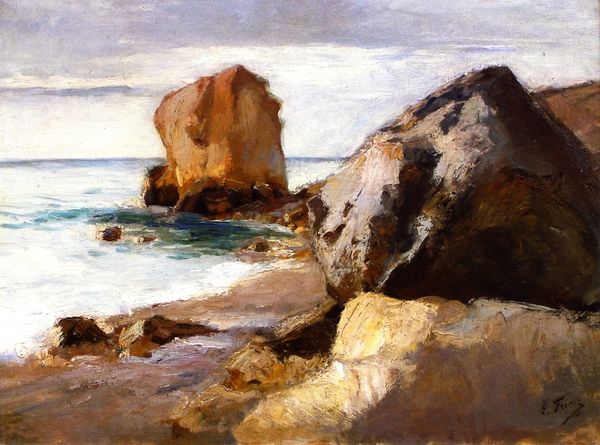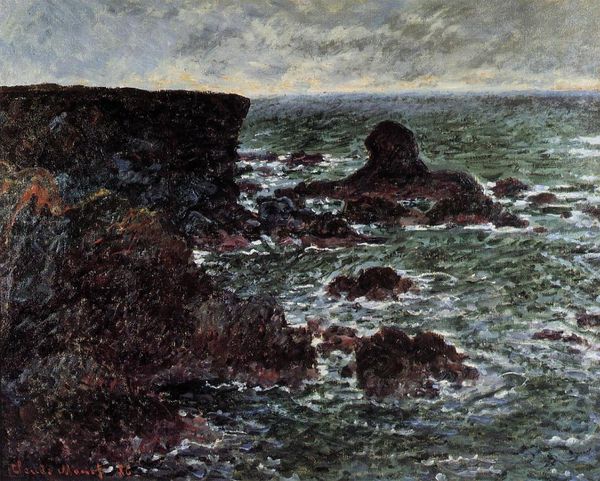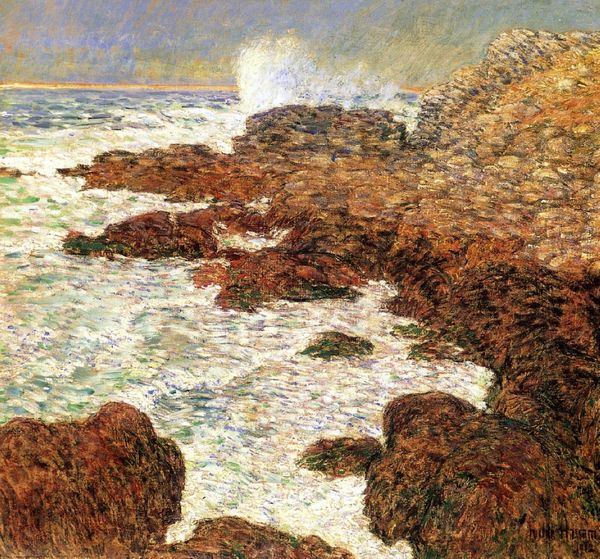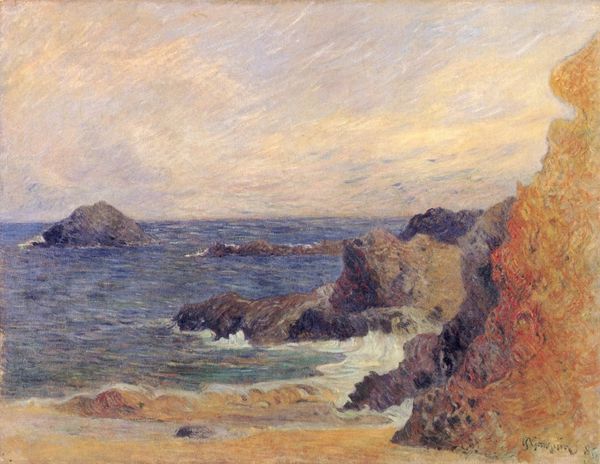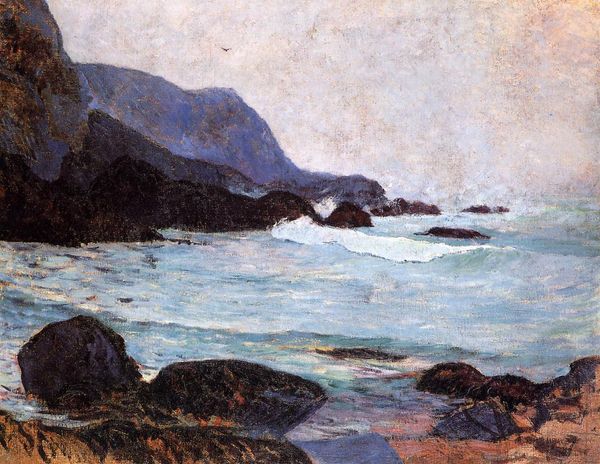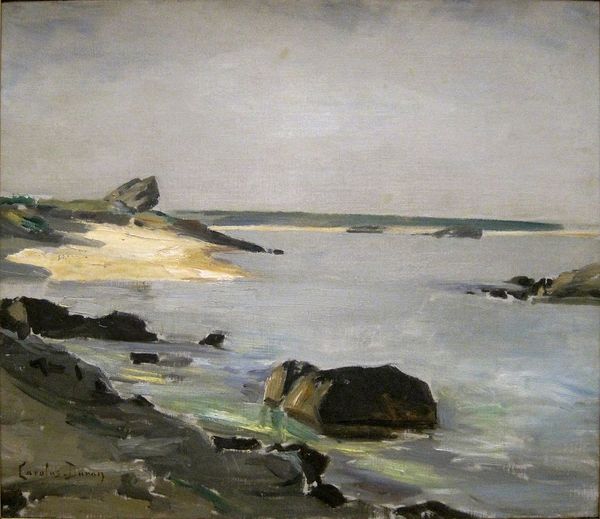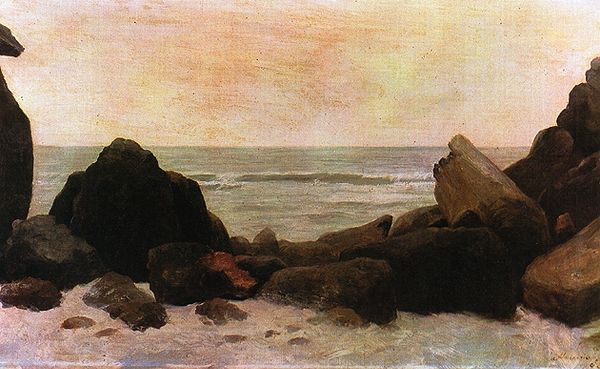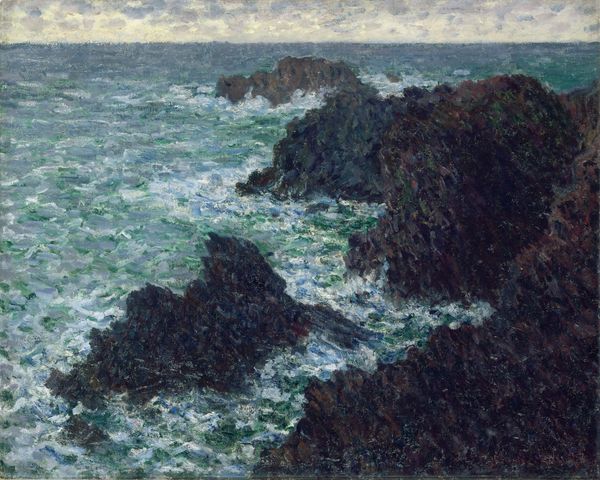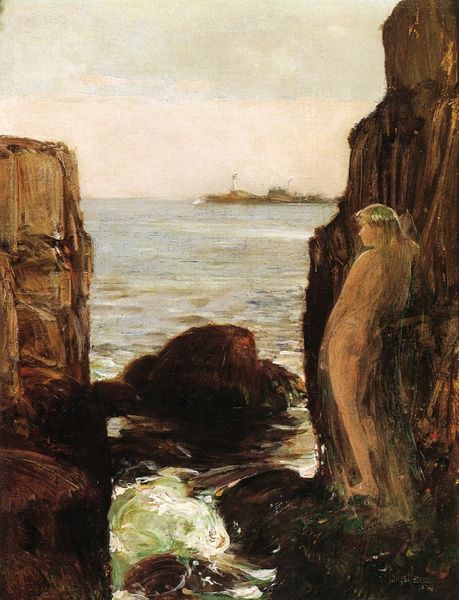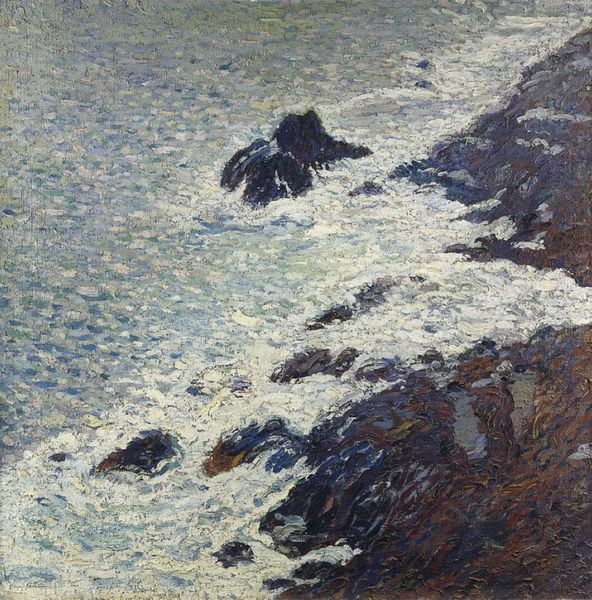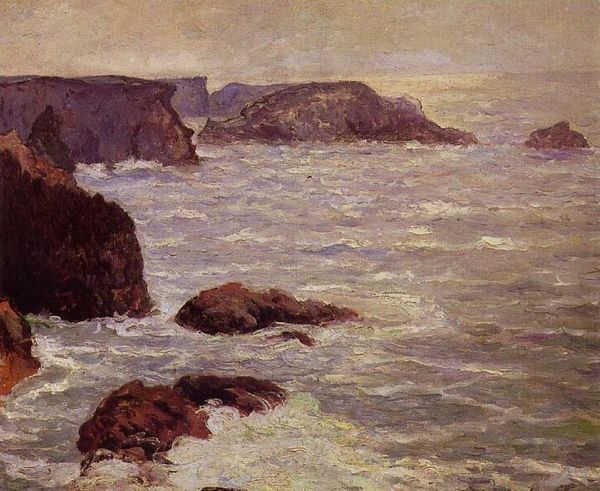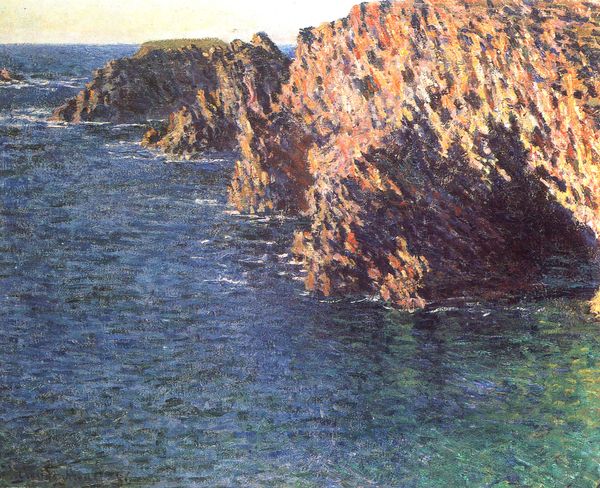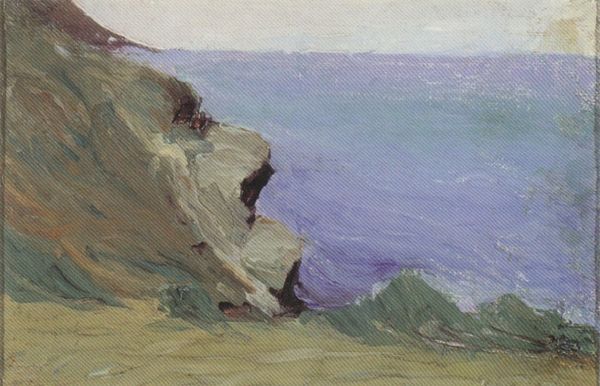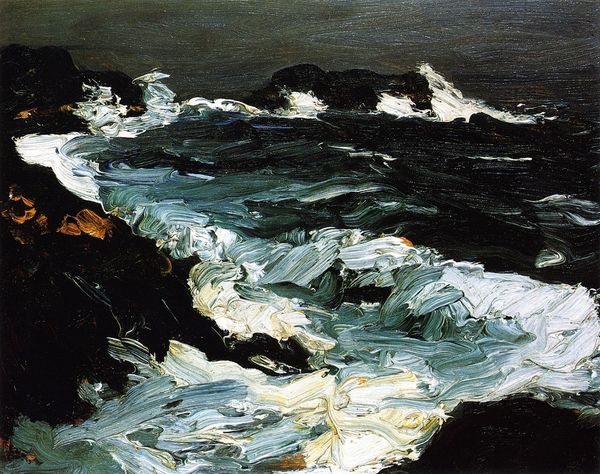
Copyright: Public domain US
Henri Matisse created this painting, Belle Île, with oil on canvas. The way Matisse handles oil paint here is quite remarkable. It is neither the exacting realism of the old masters, nor the splashy freedom of later abstraction. Instead, he builds the image with layers of pigment, from the dark masses of the cliffs to the frothy whites of the surf. This is how he gets the feeling of solid forms being eroded by the constant action of the sea. Looking closely, you can see the material qualities of the paint itself – the drags of the brush, the impastoed surfaces where he’s laid it on thickly. This kind of working acknowledges the painting as something made, not just an illusion. Matisse, like many artists of his time, was interested in connecting with a more direct experience of the world, as an antidote to industrialization. In foregrounding his process, he reminds us of the human labor involved in representing it. This approach challenges the traditional hierarchy between the fine arts and other forms of making.
Comments
No comments
Be the first to comment and join the conversation on the ultimate creative platform.
